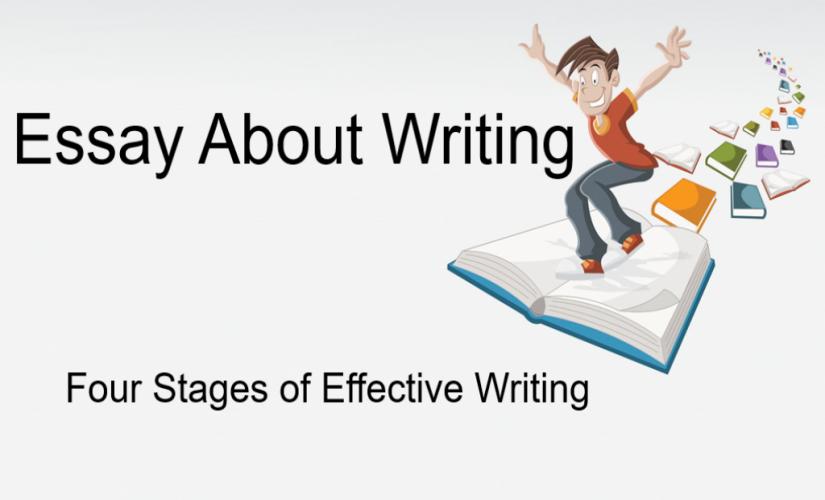Writing is an everyday activity for students and other members of the working class. Basically, the task of writing may prove difficult if an individual is oblivious of good writing practices. In this case, the writing process is relatively complex for any writer to ever achieve perfection in their works. However, there are rules of thumb that assist individuals in creating a compelling piece of writing. In particular, this essay about writing cover planning, drafting, revising, and editing, being the fundamental stages in the writing process.
Stage 1: Planning of Essay Writing

Writing Situation
The planning stage is guided by the writing situation, which is defined in the essay prompt. For instance, the writing situation comprises six elements: topic, purpose, audience, role, genre, and special requirements and context. Basically, a writer needs to critically analyze the elements of a writing situation that dictate the expected outcome of the writing process. Based on the requirements of the final draft, the planning stage of the essay about writing begins. In turn, decision making is geared toward achieving the essay requirements. Hence, the planning stage depends on the ability of the writer to interpret the writing situation correctly.
Developing Ideas in Essays
The development of ideas for the content of the essay about writing is a challenging task. How to write a summary often involves similar brainstorming processes to ensure clarity and relevance of ideas. For instance, the topic mentioned in the writing situation narrows down the properties of good ideas that may be consolidated in the body of the essay. Basically, writers employ different strategies while developing ideas, for example, freewriting, brainstorming, structured questions, and clustering. Then, there is no specific technique for developing ideas. In turn, people develop themes for academic essays from relatively rigid strategies. Also, the relationship between elements is clear and supported by research, such as structured questions and clustering. Conversely, people can optimize ideas for personal essays with strategies that accommodate random thinking patterns, like freewriting and brainstorming. Thus, the use of a combination of strategies may be useful depending on the nature of the essay.
Thesis Statement
The best ideas are selected and used in the creation of a thesis statement. For example, the main sentence presents the overall argument to the audience. In this case, people write the thesis statement in the planning stage to provide a point of reference for the author during the drafting stage. Also, the proposed thesis statement is subject to revision during other stages of the writing process. On the other hand, the central claim does not have a standard structure. However, authors must not have stating facts, casting doubt on the primary argument, and using cliché phrases. In turn, the writer should demonstrate a high level of creativity and understanding of the topic when generating a thesis statement. Mastering the parts of the essay, like the introduction, conclusion, and body, helps to organize arguments. Hence, the central sentence is a core element of the essay about writing that defines the association between the individual body paragraphs and sections.
Stage 2: Drafting an Essay About Writing
During the drafting stage, writers transform their thoughts into words. For example, there are two main approaches to creating the first draft: discovery and structure. Firstly, the discovery approach covers the principles of focused freewriting. On the other hand, the structured approach requires the author to follow an outline or planning notes strictly. In this case, the development of the first draft involves the enforcement of general paragraph and essay structure. Also, authors must ensure that the first draft adheres to the general essay writing guidelines. In turn, an ideal paragraph has a topic sentence, a statement of evidence, a detailed explanation of the evidence, and a concluding or transition sentence. In most cases, essays have three parts in their structure: introduction, body, and conclusion. Besides, the author may incorporate in-text citations, footnotes, and endnotes appropriately. Thus, multiple logical, stylistic, and mechanical flaws characterize the first draft.
Stage 3: Revising
People use the revision stage of the essay about writing for a critical evaluation of the content and completeness of the argument. For instance, people revise the first draft with a focus on evaluating the underlying logic of the entire paper and assessing the extent to which the essay satisfies the requirements highlighted in the essay prompt. In this case, writers should revise the first draft until they are satisfied that the essay adequately addresses the topic of interest. Moreover, the authors re-evaluate the systematic presentation of ideas to ascertain. In turn, the audience can easily follow their arguments. Then, people must refrain from attempting to revise and edit the essay simultaneously. However, they must avoid premature editing because of negative consequences on the revision process. Hence, the essay must be free of any issues concerning the content and its systematic presentation by the end of this stage.
Stage 4: Editing a Draft Essay
The editing stage shifts the writer’s attention from the content and organization to the essay’s surface-level features. For example, editing involves the identification and correction of punctuation, spelling, grammar, numbering, capitalization, and abbreviation errors. During the editing stage of the essay about writing, the authors examine each statement as an independent element. In this case, their only interest is the correctness of the sentence. Also, writing handbooks are useful reference materials for writers while they edit their essays. Then, the process of editing may be aided by spell-checking and grammar software. In turn, writers are discouraged from accepting all changes suggested by spell-checking and grammar applications. Unfortunately, the software is not a substitute for human editing. Basically, grammar rules cannot be accurately codified to develop an artificial editor. Thus, editing requires multiple readings to ensure that all mistakes have been eliminated.
Conclusion on Essay About Writing
The essay about writing is reliant on an individual’s ability to complete the four stages of the writing process. Firstly, the planning stage is the most significant activity. Basically, it yields the thesis statement, content, and preliminary organization of ideas. Then, the drafting stage follows the planning stage. In this case, it involves the process of transforming thoughts into text. Also, people must revise the first draft thoroughly to remove logical and organizational errors. In turn, the revision allows for the evaluation of the contents’ congruence with the thesis statement. Finally, the revised draft undergoes editing to eliminate mechanical and grammar errors, which results in the final draft. Thus, writers can rely on the four stages of the writing process, regardless of the nature and purpose of writing.


